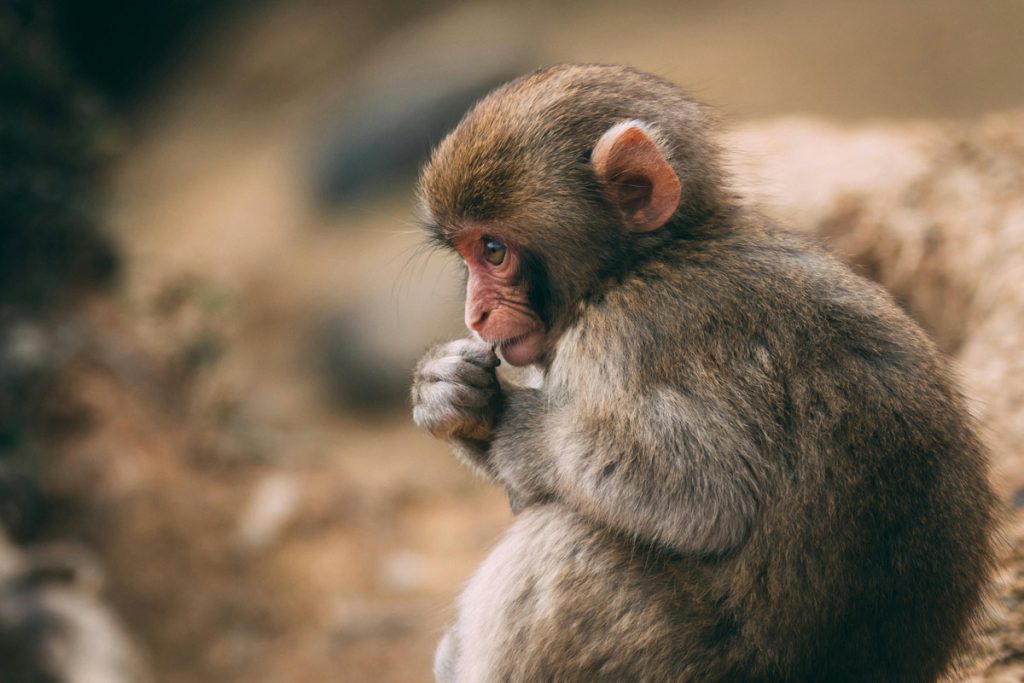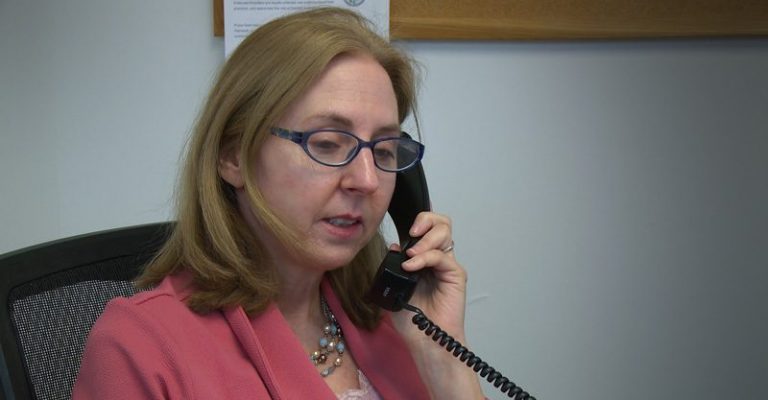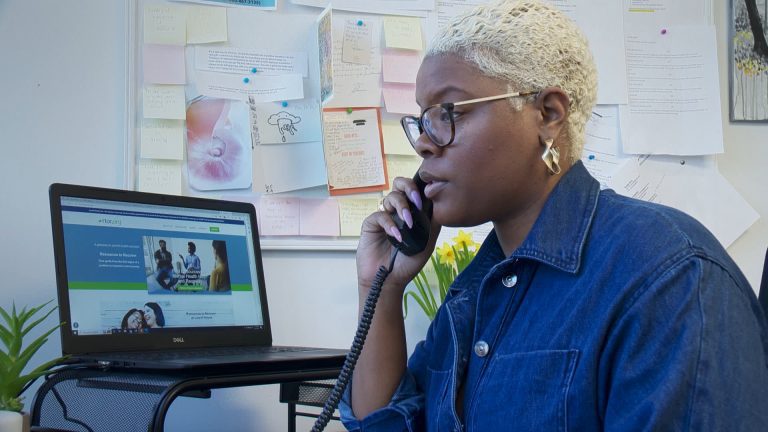I spent decades in the waiting room of depression. Not suicidal. Not fine. I started ketamine therapy because nothing else worked. Not the pills. Not the years of talking. I wasn’t looking for answers. I just wanted something to shift.
The psychedelic visions started early. During one session, I found myself in mission control, watching an Apollo rocket prepare for liftoff. The countdown had begun. People moved with purpose. Dials lit up. Then I saw the capsule.
There was a monkey inside.
Small, trembling, strapped into a harness. He was terrified. And no one around me seemed to notice.
I screamed. I pleaded. I begged someone to stop the launch. I tried to pry open the door, delay the countdown, do anything. Nothing worked. The rocket fired and the monkey disappeared into the sky.
Then it happened again.
Same countdown. Same helplessness. Same launch. Over and over. Every time, I tried harder. Every time, I failed.
Suddenly, a stunning realization: I’m the monkey.
I wasn’t just the one watching. I was also the one being launched. And I kept jumping back and forth between those two selves—the adult in mission control trying to save a life, and the trembling creature strapped into a future he didn’t choose.
I couldn’t save myself. That was the horror. That was the loop.
When the session ended, I could barely speak. My blood pressure had spiked. I was drenched in sweat, sobbing. In the car, I told my sister Vicky what I saw. She listened. Then she said, “You’re not crying for the monkey. You’re crying for yourself. For the first time, you saw yourself as someone worth saving.”
I’m incredibly bonded to Vicky, a novelist with a gift not just for creating metaphors but for interpreting them. And what is a psychedelic vision but a metaphor from the subconscious?
So I listened attentively to what she said. “That mission control?” she said. It was the machinery mom, dad, and Leo (our step-dad) helped build; the system that kept launching all of us kids into space so they wouldn’t have to look at us.”
When I was ten, my mother left my father. Packed us up and flew us out of Quito, Ecuador straight to Miami, leaving behind our big, loud, affectionate South American family.
One flight and they were gone. Aunts and uncles who pinched my cheeks, cousins who tumbled around me like puppies, the Spanish chatter that made the house feel alive. After that, I never saw or heard from them again.
Six months later, we moved in with my mother’s new husband, and she banned Spanish in the house — said it made him uncomfortable. She didn’t have to say, “Stop being who you are,” but my brother, my sister, and I heard her loud and clear.
Spanish was our first language, the one we dreamed in, fought in, counted in. English was our second tongue, but we’d been fully bilingual, slipping between them like it was nothing. Then, almost overnight, we couldn’t do it anymore. We didn’t just stop speaking Spanish, we couldn’t remember how. It was like the language leaked out of our bones while we slept.
Years later, a psychiatrist told me he’d rarely heard of a case like ours — an entire family developing “trauma-induced language attrition,” where the mind erases its own mother tongue to survive. Cut off from the warm, noisy, South American side of the family, we clung to our mother, the last lifeline we had, and sacrificed the language that tied us to everyone else.
Then the adoption papers came. A new last name. A new race printed neatly on a birth certificate: “White.” The erasure was official, notarized, irreversible. Ernesto Michael Alvear was gone. Michael Nathan Strousberg was what was left.
And so the launches began. One piece of me after another, strapped down and shot into oblivion so everyone else could feel at ease. The part that was Ecuadorian. The part that spoke another language. The boy named after his father. The boy with skin too dark to blend in. Each launch just another version of “This part of you isn’t safe to keep. Send him away.”
By the time I was twelve, I was soaking my hands in bleach, trying to scrub away the last bit of brown that tied me to the monkey in the capsule — that innocent, trembling creature I’d been taught to eject for my own survival.
No one forced me to keep pressing that launch button after I grew up. I did it myself. I made invisibility my specialty. But in that ketamine session, something cracked. The horror wasn’t just that I saw the monkey was me; it was realizing I never once thought he deserved to stay here. That he belonged on earth. That he deserved rescuing.
My sister helped me see that the mission control room was wired with my family’s old switches and buttons. And that the core of the vision wasn’t that I failed to save myself, but that for the first time I tried; that the vision birthed a self-compassion that I could nurture and turn into profound healing.
“You can bring the monkey home in a thousand small ways,” she said. “You can unstrap him from that harness in the ways you speak to yourself, the way you embrace the parts of the monkey that made mission control want to launch it out of existence.”
She was right. I do speak more Spanish now — not fluently, not like the child who once dreamed in it, but enough to feel it rumble in my chest again. I reclaimed my father’s name, Alvear, so at least on paper, I exist as the boy who was never meant to disappear.
And every time I catch myself punishing or shaming some tender part of me, I stop and wonder: Did I just strap the monkey back into that capsule? If I did, I remind myself he’s mine to bring home — again and again, for as long as it takes.
Maybe you have your own version of that monkey — the part of you you’ve strapped down and sent away to survive. If so, I hope you find one small way today to let it stay. To speak to it gently. To ask, What do you need? And to listen like it’s worth saving — because it is.
About the Author: Ernesto Michael Alvear is an author and columnist who writes about healing, identity, and the everyday work of self-compassion. He lives in Atlanta with his twin rescue dogs, Audrey Hepburn and Dudley Do-Right.
Photo by DSD: https://www.pexels.com/photo/close-up-photo-of-a-monkey-1822603/
The opinions and views expressed in any guest blog post do not necessarily reflect those of www.rtor.org or its sponsor, Laurel House, Inc. The author and www.rtor.org have no affiliations with any products or services mentioned in the article or linked to therein. Guest Authors may have affiliations to products mentioned or linked to in their author bios.
Recommended for You
- Dealing With Toxic Family Members: A Survival Guide for Family Gatherings - December 22, 2025
- When to Seek Help from a Child Psychiatrist: 6 Signs Your Child Needs Support - December 19, 2025
- When Everything Feels Urgent: How Clarity Protects Your Mental Health - December 18, 2025







